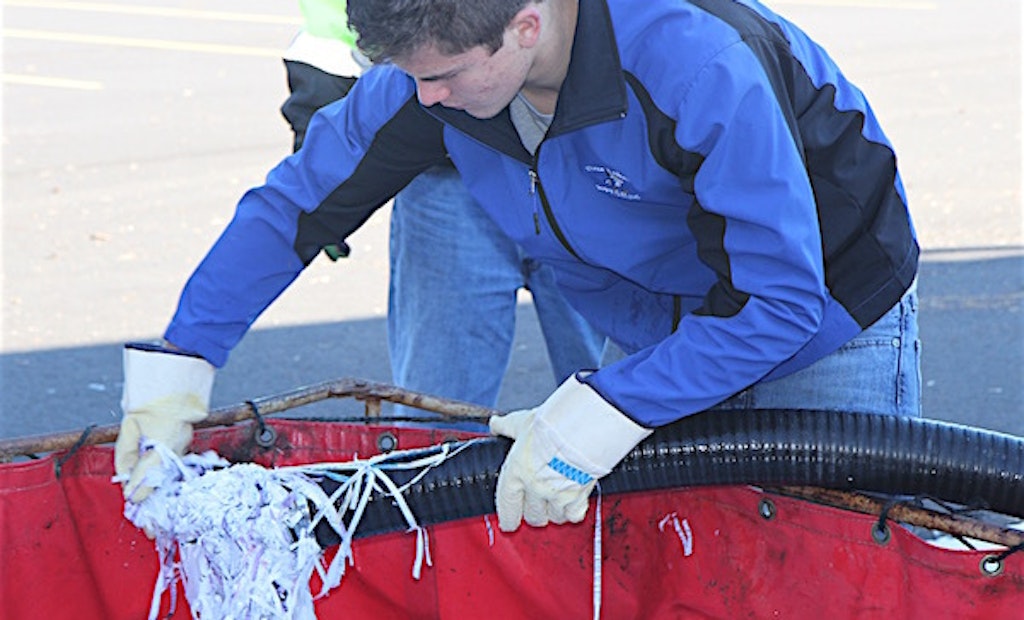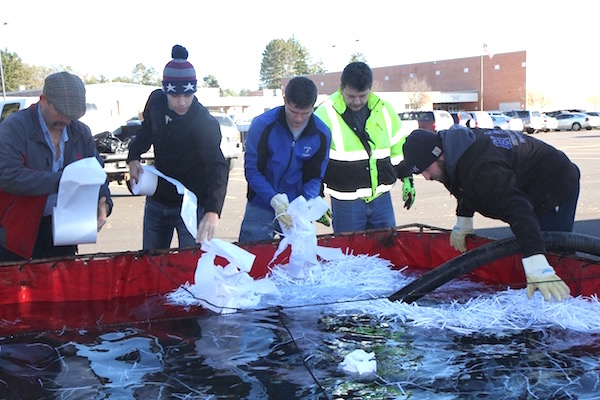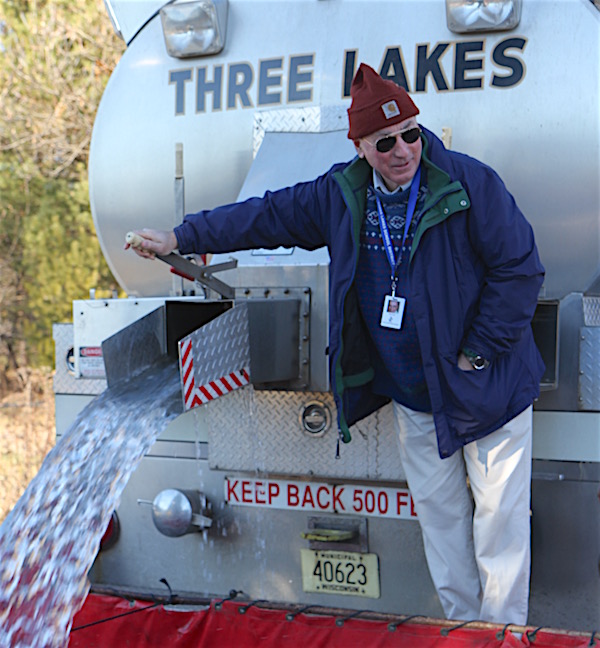
They’d been pumping the latrine for hours — detaching the hose, unclogging it and restarting the truck’s vacuum over and over again. It was an aggravating task, and it left the trio of high schoolers dispirited and fatigued. Later, as they stood together talking after work, they started brainstorming ways to make the job easier.
That process has now reached a pivotal moment, as Three Lakes (Wisconsin) High School students Tommy Stuckart, Jack Connelly and Steven Gensler anxiously watch a prototype pumper screen of their own design sift through a cluttered water tank sitting in the school’s parking lot.
The young workers are enrolled in an elective class called How to Make (Almost) Anything, which allows them to turn ideas into reality using design and fabrication equipment housed in the school’s state-of-the-art Fab Lab. The students in this year’s class chose to solve a problem related to their employment at H&H Septic Services of Rhinelander, Wisconsin, says Fab Lab Director Steve Yahr.

Tommy Stuckart (left) and Nathan Vick of H&H Septic Services test out the pumper hose attachment designed by a trio of Three Lakes High School students.
While most material that makes it through the 3-inch pipe to a home’s septic tank is easily pumped out, H&H Septic Services also pumps the latrines found at campgrounds and parks. People will throw just about anything into those open-pit toilets, and the students are looking for a way to filter out the materials causing persistent hose clogs.
“The time spent unblocking the hose costs the pumping company money,” says Yahr. “The students are researching, designing — and ultimately want to market and sell — a screen which fits on the end of the hose that will allow waste to flow into the pumping truck, but which will also screen out large objects that block the hose.”
All three students created designs using a solid modeling computer-aided design program called SolidWorks, and then sent those designs to manufacturing company Absolute Turn of Wheeling, Illinois. They ended up going with Connelly’s vision, says Stuckart.
“It’s my buddy Jack’s design,” he says. “We submitted mine first, and it was a pain to make and was a little intricate, and then Jack’s worked out really slick. We all decided to do a little bit of modifications to it, and we all agreed on it.”
With a prototype in their hands a week later, the students starting planning the first phase of testing, and that got the community involved. The local fire department volunteered to bring a tanker and a portable water tank, while H&H Septic agreed to show up and pump.
And that brings us back to the parking lot, and to the hopeful eyes locked onto the septic hose as it filters the paper products strewn throughout the tank. They’ve got a stopwatch going, and they’re hoping the pumper can pull 700 gpm without clogging.

In order to test the hose attachment's ability to filter unwanted debris, the students and their helpers submerged a large amount of various paper products in the portable water tank.
It’s entertaining, to be sure, but it’s also a decisive moment for these emerging septic pumpers. If these three young men — Stuckart, Connelly and Gensler — have found a solution to the clogging issue, they’re making the company more money. And they might even find a market for their new product.
The watch stops, and smiles are exchanged. Yahr says the students succeeded in identifying a problem and developing a solution.
“Prototype testing will continue — some design changes have been identified,” he says. “But the owner of the pumping company is very pleased with the initial product and tests. I am very proud of these students for their willingness to take on this project. New product development is challenging and they have proven themselves equal to the challenge.”

Instructor Steve Yahr lit up with boyish glee when the local fire department allowed him to release water from the truck into the portable tank for the test.
Yahr also thanked everyone who was involved with the project.
“We would like to take this opportunity to say thank you to Absolute Turn of Wheeling, Illinois for volunteering to make our prototypes free of charge; to H&H Septic of Rhinelander for confirming the requirements and providing the truck and hose for testing; and to the Three Lakes Fire Department for providing a drop tank, a tender, and 3,000 gallons of water for the students to test.”
Some of you might be wondering — just how did H&H Septic manage to get three high-school-aged young men interested in pumping septic tanks and latrines? It all started when Stuckart’s brother-in-law asked for some help.
“His parents own H&H Septic out of Rhinelander, and when I was 13 they asked if I wanted to make a little extra money one day,” says Stuckart. “And I said ‘of course!’ I went and shoveled for them, and they called me back the next year. I started working on the pumper trucks with the guys as a trainee, and then started doing installs as I got a little older.”
As for the future of the pumper hose attachment, the young men have some more testing to do. But keep an eye out in Pumper magazine, you might just see it spotlighted someday.





